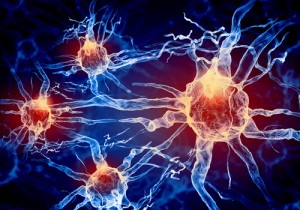New Study Techniques Reveal Insights Into Dementia with Lewy bodies (DLB) and Corticobasal Syndrome

 A new study on Dementia with Lewy bodies (DLB) and Corticobasal Syndrome (CBS) entitled “Differentiating between visual hallucination-free dementia with Lewy bodies and corticobasal syndrome on the basis of neuropsychology and perfusion single-photon emission computed tomography” was published in Alzheimer’s Research & Therapy by Michael R Misch, part of Dr. Mario Masellis’ group from the L.C. Campbell Cognitive Neurology Clinic at the Sunnybrook Health Sciences Centre in Toronto, Canada.
A new study on Dementia with Lewy bodies (DLB) and Corticobasal Syndrome (CBS) entitled “Differentiating between visual hallucination-free dementia with Lewy bodies and corticobasal syndrome on the basis of neuropsychology and perfusion single-photon emission computed tomography” was published in Alzheimer’s Research & Therapy by Michael R Misch, part of Dr. Mario Masellis’ group from the L.C. Campbell Cognitive Neurology Clinic at the Sunnybrook Health Sciences Centre in Toronto, Canada.
Dementia with Lewy Bodies (DLB) and Corticobasal Syndrome (CBS) are atypical parkinsonian disorders characterized by fronto-subcortical and posterior cognitive dysfunction. Lewy body pathology can be detected based on visual hallucinations, although these features are not observed in all cases of DLB and are rare in Corticobasal Syndrome. These two pathologies can normally be clinically distinguished during the mid-stages of the disease, but in the early stages they usually have identical clinical characteristics and therefore a precise diagnosis is more difficult. Thus, additional information through neuroimaging and neuropsychological evaluation could help to differentiate DLB without visual hallucinations from CBS and would enable to treat patients with a more adequate disease-specific treatment.
In this study, the research team enrolled prospectively 31 patients with Corticobasal Syndrome and 30 patients with Dementia with Lewy bodies without visual hallucinations and case-control subjects. They performed neuropsychological and neuropsychiatric measurements as well as brain perfusion single-photon emission computed tomography and structural magnetic resonance imaging (MRI) between the two groups to identify exclusive characteristics of both pathologies. The perfusion results were from 42 control subjects.
The researchers found that the patients with Dementia with Lewy bodies without hallucinations had a worse performance based on episodic memory, delayed and cued recall portions of California Verbal Learning Test and the delayed visual reproduction of the Wechsler Memory Scale-Revised when compared with the Corticobasal Syndrome group. Both groups did not show significant differences relative to the magnetic resonance imaging results.
Finally, the research team concluded that the patients with DLB without visual hallucinations and CBS patients in earlier stages of the disease could be distinguished by a reduced perfusion in the left occipital region and worse episodic memory performance.






